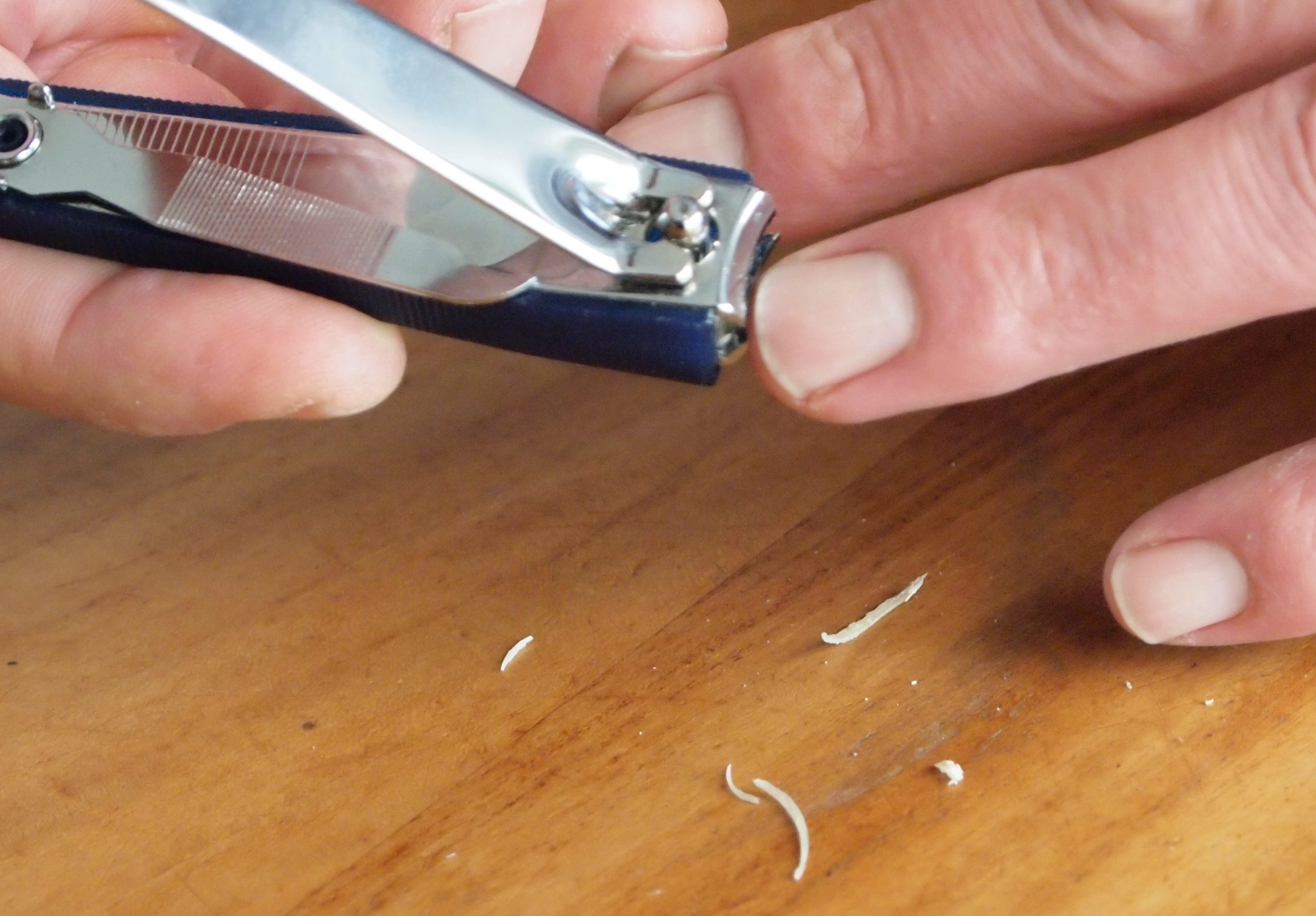Analysis of nail clippings can reveal your chemical surroundings of three months ago. But how reliable are the results, asks PhD student Paulo Favaro?
Just like hair, blood and urine, toe- and fingernails can be used as ‘biomarkers’. That is: biological materials that provide information about the past metabolism. Nails grow slowly at about 0,5 to 1 mm per week. So today’s clippings were formed about three months ago and contain information about the chemical surroundings at that time. If for example you ate much fish at the time, it may show up in an elevated amount of (methyl) mercury. Other frequently studied elements are selenium, iron, zinc and chromium.
The amounts are usually tiny – typically nanograms per gram – but can be detected by gas chromatography, or by neutron activation. In neutron activation analysis, the sample is bombarded with neutrons from (for instance) a nuclear reactor. Radioactive isotopes are formed, that will decay each in a specific way. Analysis of the decay radiation will quantitatively reveal the presence of certain elements in the sample.
Given the ease of sample taking, analysis of nail clippings seems a promising tool for epidemiological studies to tease out the health effects of environmental exposures.
But is it? Paul Favaro asks. The PhD student at the department of radiation science and technology at the Applied Sciences faculty shows in his thesis that treatment of samples greatly influences the outcome of the analysis. So unless there is a standard way in which samples are treated, comparisons between samples and laboratories are meaningless.
As dirt and nail polish contain over thousand times more trace elements than the nail itself, cleaning of the samples is a necessity. But the way of cleaning (with acetone, water or detergent) influences the outcome. Just like the laborious mechanical scraping of the samples.
Another uncontrolled variable is the water content of the nail clippings. Keratin, the nail protein, can contain 30 to 40 percent water, and releases it quite slowly (over a day).
And then there are specific problems with certain elements. Mercury for example is known to evaporate from the samples during neutron activation and it escapes from the usual polyethylene capsules. Only closed quartz ampoules will preserve the mercury content.
It’s not surprising then that Favaro pleads for more research on how various elements of interest are affected by the sample preparations. Eventually, he says, science will need a blueprint on sample handling if easily available nail clippings are to be used as biomarkers in a reliable and quantifiable way.
Paulo César Favaro, Metrology of Nail Clippings as Trace Element Biomarkers, 12 July 2013, PhD supervisor Prof. Bert Wolterbeek.



Comments are closed.